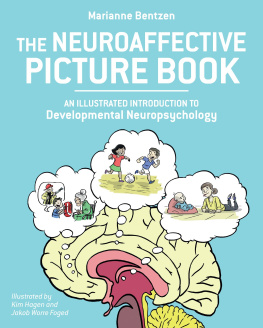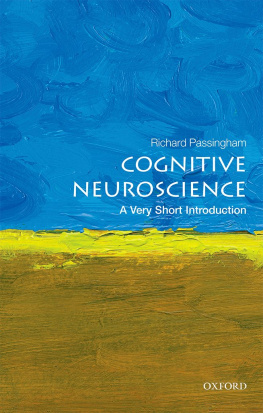The Neurobiology of the Prefrontal Cortex
Oxford Psychology Series
Editors: Mark DEposito, Daniel Schacter, Jon Driver, Anne Treisman, Trevor Robbins, Lawrence Weiskrantz
1. The Neuropsychology of Anxiety
J. A. Gray
2. Elements of Episodic Memory
E. Tulving
3. Conditioning and Associative Learning
N. J. Mackintosh
4. Visual Masking
B. G. Breitmeyer
5. The Musical Mind
J. A. Sloboda
6. Elements of Psychophysical Theory
J.-C. Falmagne
7. Animal Intelligence
L. Weiskrantz
8. Response Times
R. D. Luce
9. Mental Representations
A. Paivio
10. Memory, Imprinting, and the Brain
G. Horn
11. Working Memory
A. Baddeley
12. Blindsight
L. Weiskrantz
13. Profile Analysis
D. M. Green
14. Spatial Vision
R. L. DeValois and K. K. DeValois
15. The Neural and Behavioural Organization of Goal-Directed Movements
M. Jeannerod
16. Visual Pattern Analyzers
N. V. S. Graham
17. Cognitive Foundations of Musical Pitch
C. L. Krumhansl
18. Perceptual and Associative Learning
G. Hall
19. Implicit Learning and Tacit Knowledge
A. S. Reber
20. Neuromotor Mechanisms in Human Communication
D. Kimura
21. The Frontal Lobes and Voluntary Action
R. Passingham
22. Classification and Cognition
W. K. Estes
23. Vowel Perception and Production
B. S. Rosner and J. B. Pickering
24. Visual Stress
A. Wilkins
25. Electrophysiology of Mind
Edited by M. D. Rugg and M. G. H. Coles
26. Attention and Memory
N. Cowan
27. The Visual Brain in Action
A. D. Milner and M. A. Goodale
28. Perceptual Consequences of Cochlear Damage
B. C. J. Moore
29. Binocular Vision and Stereopsis
I. P. Howard and B. J. Rogers
30. The Measurement of Sensation
D. Laming
31. Conditioned Taste Aversion
J. Bures, F. BermdezRattoni, and T. Yamamoto
32. The Developing Visual Brain
J. Atkinson
33. The Neuropsychology of Anxiety, 2e
J. A. Gray and N. McNaughton
34. Looking Down on Human Intelligence
I. J. Deary
35. From Conditioning to Conscious Recollection
H. Eichenbaum and N. J. Cohen
36. Understanding Figurative Language
S. Glucksberg
37. Active Vision
J. M. Findlay and I. D. Gilchrist
38. The Science of False Memory
C. J. Brainerd and V. F. Reyna
39. The Case for Mental Imagery
S. M. Kosslyn, W. L. Thompson, and G. Ganis
40. Seeing Black and White
A. Gilchrist
41. Visual Masking, 2eB.
Breitmeyer and H. men
42. Motor Cognition
M. Jeannerod
43. The Visual Brain in Action
A. D. Milner and M. A. Goodale
44. The Continuity of Mind
M. Spivey
45. Working Memory, Thought, and Action
A. Baddeley
46. What Is Special about the Human Brain?
R. Passingham
47. Visual Reflections
M. McCloskey
48. Principles of Visual Attention
C. Bundesen and T. Habekost
49. Major Issues in Cognitive Aging
T. A. Salthouse
The Neurobiology of the Prefrontal Cortex
Anatomy, Evolution, and the Origin of Insight
Richard E. Passingham
Steven P. Wise


Great Clarendon Street, Oxford, OX2 6DP,
United Kingdom
Oxford University Press is a department of the University of Oxford.
It furthers the Universitys objective of excellence in research, scholarship,
and education by publishing worldwide. Oxford is a registered trade mark of
Oxford University Press in the UK and in certain other countries
Oxford University Press, 2012
The moral rights of the authors have been asserted
First Edition published in 2012
Impression: 1
All rights reserved. No part of this publication may be reproduced, stored in
a retrieval system, or transmitted, in any form or by any means, without the
prior permission in writing of Oxford University Press, or as expressly permitted
by law, by licence or under terms agreed with the appropriate reprographics
rights organization. Enquiries concerning reproduction outside the scope of the
above should be sent to the Rights Department, Oxford University Press, at the
address above
You must not circulate this work in any other form
and you must impose this same condition on any acquirer
British Library Cataloguing in Publication Data
Data available
Library of Congress Cataloging in Publication Data
Library of Congress Control Number: 2012935803
ISBN 9780199552917
Printed and bound by
CPI Group (UK) Ltd, Croydon, CR0 4YY
Oxford University Press makes no representation, express or implied, that the
drug dosages in this book are correct. Readers must therefore always check
the product information and clinical procedures with the most up-to-date
published product information and data sheets provided by the manufacturers
and the most recent codes of conduct and safety regulations. The authors and
the publishers do not accept responsibility or legal liability for any errors in the
text or for the misuse or misapplication of material in this work. Except where
otherwise stated, drug dosages and recommendations are for the non-pregnant
adult who is not breast-feeding
Links to third party websites are provided by Oxford in good faith and for information only. Oxford disclaims any responsibility for the materials contained in any third party website referenced in this work.
Dedication
In memory of
Patricia S. Goldman-Rakic (19372003)
Edward V. Evarts (19261985)
Edward G. Jones (19392011)
Animals studied by Americans rush about frantically, with an incredible display
of hustle and pep, and at last achieve the desired result by chance. Animals
observed by Germans sit still and think and at last evolve the solution out of
their inner consciousness.
Bertrand Russell, An Outline of Philosophy (1925)
Preface
In the 1960s, the Russian neuropsychologist Alexander Luria gave a much anticipated lecture in London, which one of us attended. He started by drawing a brain on the blackboard and placing a large question mark over the prefrontal cortex. At the end of the lecture, he triumphantly rubbed out the question mark. Readers of this book will not be so lucky.
Why prefrontal, why now?
One of us had a go in an earlier book, The Frontal Lobes and Voluntary Action (Passingham 1993). That book treated the frontal lobes as a whole, including its motor areas, and it suggested that their key functions involve conditional behaviour. In this kind of behaviour, one sensory context determines which action to take and other contexts lead to other actions.
The publisher later asked for a second edition, but a simple revision was out of the question. Too much has changed. The 1993 book appeared in the infancy of functional imaging, which has altered the field profoundly. The book proudly showed a brain scan as the frontispiece and described the first authors early results from positron emission tomographyand that was all. The intervening years have seen thousands of imaging papers, with more on the prefrontal cortex than on anything else.











